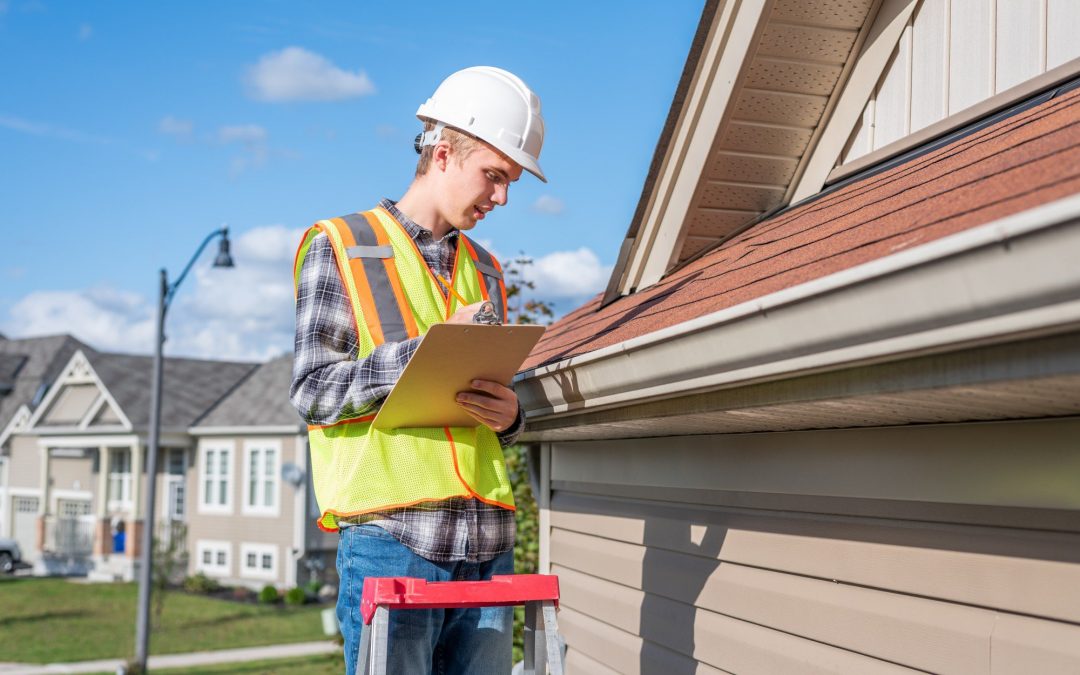90% of U.S. homeowners believe home inspections are a necessity. When someone buys a home, they want to ensure the foundation is fit for move-in.
But how do inspectors conduct an inspection? Regardless of where you live and what kind of property you own, inspectors have similar equipment and tools they use to ensure your home passes the inspection.
Here are ten items you will find in every home inspector tool kit.
The Home Inspector Tool Kit: What’s Included?
There are many tools that go into ensuring your home is safe and sturdy. Here are a few items you can expect your inspector to use.
1. Telescoping or Articulating Ladder
Unlike a traditional ladder, an inspector will use a telescoping and/or articulating ladder. These ladders fold down to short lengths and are ideal to use and carry inside of the home.
An articulating ladder has more flexibility than a telescoping ladder; it can bend in an A-frame while also extending. But both ladders reach impressive heights so the inspector can look at your ceiling and other high places.
2. Telescoping Adjustable Mirror
The human eye can’t see everything. This is why an inspector carries an object such as a telescoping adjustable mirror.
This device can help the inspector see into areas where there’s limited access, such as a confined or hidden area. Some of them even include a light to see into dark areas.
The mirrors have a head that swivels around, letting the inspector see the circumference of a confined area.
3. Voltage/Current Indicator
This tool detects the electrical currents flowing through your wires or devices.
This is done to test for live wires.
Your inspector may use a couple of different indicators, depending on the voltage range.
There are low-volt indicators that can pick up between 20- and 90-volt ranges. They may also use broad range indicators that can go as high as 1,000 volts.
4. AFCI/GFCI Tester
Another way an inspector can check for the electrical quality of your home is with either an AFCI or GFCI tester. They test the risk of electrical shock and any other electrical dangers.
GFCI stands for ground-fault circuit interrupter tests the amount of current traveling from one end to the other.
If you live in a new home, the inspector may use an AFCI tester instead. An arc-fault circuit interrupter tests your circuit more thoroughly by creating waveform patterns.
5. Moisture Meters
Excess moisture can lead to a myriad of problems, including structural damage and mold and mildew build-up. To ensure there’s no excess moisture in your home, your inspector will use a moisture meter.
The way they measure the moisture depends on which meter they have. If they’re using a pin-style meter, they will insert the pin into the material (usually wood). The pin runs an electrical current to read the moisture level.
There’s also a pinless option. This is ideal for scanning larger areas and scanning the moisture for different materials. Some can even measure moisture in limited and hard-to-reach areas.
6. Infrared Thermometer or Camera
Temperature variations, whether hot or cold, can be dangerous to your health.
These variations can be prevalent in the home. An inspector will check for these variations using an infrared thermometer or camera.
These tools are similar because they show the temperature of a large surface area, but they’re slightly different. A thermometer spot checks while a camera also takes an image of the area.
7. Carbon Monoxide Analyzer
Every year, 430 people die from accidental carbon monoxide poisoning. Carbon monoxide is a colorless and odorless poisonous gas.
Detecting a carbon monoxide emission is impossible without tools. This is why an inspector uses an analyzer tool to test carbon monoxide emissions from appliances and other areas.
An analyzer doesn’t only detect dangerous carbon monoxide levels the way an alarm does. They can even detect low amounts of carbon monoxide.
8. Combustible Gas Detector
Combustible gases include methane, propane, butane, hydrogen, and natural gases.
These gases are flammable and/or explosive and some of these gases are even toxic. You can usually find these gases near appliances, equipment, pipes, and tanks.
A detector can find even small amounts of these gases in your home and can help detect a possible leak.
If you’re concerned about combustible gases in your home, be sure you ask about the tool. Some only detect certain gases or can only test smaller areas.
9. Water Pressure Gauge
A water pressure gauge helps test your water pressure and can avoid any water damage. Your inspector may use this device to ensure your water pressure is at normal levels. Depending on the device, they can also test the water flow.
That’s if you don’t already have a gauge or aren’t measuring your water pressure yourself.
They not only check the pressure in your plumbing and faucets but also in your hoses and even your irrigation system.
10. Simple Toolkit
Finally, your inspector will also bring a handy toolkit for small fixes.
Their toolkit can include simple tools, such as a screwdriver and hammer. But they may also carry other simple materials. These include a compass, tape measure, electrical gloves, safety glasses, and a flashlight.
Don’t feel surprised if you see your inspector walking around with a toolbelt or even a tool vest so they have easy access to these supplies.
Hire a Home Inspector Today
Regardless of a home’s age, it’s essential you know a home has appropriate living conditions. Before moving into your home, it’s essential to hire a home inspector to ensure the home’s foundation is safe.
To inspect the home, a home inspector tool kit will point out anything the human eye can’t detect. This includes everything from checking your water pressure to checking any unseen areas for health concerns.
Are you in Northeast Ohio? Don’t move into your home unless you get an inspection first! Schedule an inspection with us.

